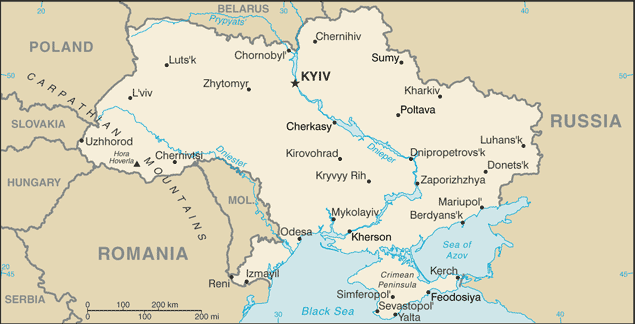A year after Russia’s invasion of Ukraine, the country’s agricultural sector, which has traditionally been a “major driver of the [Ukrainian] economy,” is moving ahead despite decreased production and challenges in getting its products to market, according to Antonina Broyaka, an Extension associate at Kansas State University.
Broyaka is a refugee from Ukraine, where she served in various roles at the Vinnytsia National Agrarian University, Ukraine, including teaching assistant, senior lecturer, associate professor and vice dean for research and dean of the faculty of economics and entrepreneurship. She has given several webinar presentations on the effects of Russia’s invasion on Ukraine’s economy and agriculture. She earned the equivalent of doctorate in economics at the National Academy of Agrarian Sciences of Ukraine, in Kyiv.
In a poignant moment, Broyaka shared how she made the decision to leave Ukraine with her family when they were awakened by the sound of bombs one morning. They walked to the Polish border.
In her latest webinar for K-State, Broyaka estimated direct losses to Ukrainian agriculture producers at $7.8 billion and indirect losses at $30.24 billion. Grain production (including yield decreases) decreased by 53.4 million metric tons, or 37% and oilseed sales by 17.5 metric tons, or 24%.
Livestock has been the least impacted sector, said Broyaka, with meat production down by 11% and milk production by 12%. The main reason for production decreases in all categories, she said, was “the occupation and the destruction of facilities.”
Fertilizer sanctions loosened
Ukraine’s reduction in exports is due mainly to Russia’s blockage of seaports. Despite heroic efforts to increase exports via western rail routes under less pressure from Russian forces, they remain a bottleneck. Grain exports are down by about 24%. The Black Sea Grain Initiative, a multi-country agreement to keep grain exports moving from the Balck Sea, had a March 19 ending date and Russia raised objections to extending it, Broyaka said—including tying its agreement to an extension to the agreement of western countries to end or loosen sanctions against Russian-sourced fertilizer.
Due to concerns about famine in Africa, the EU did indeed agree to loosen sanctions against Russian fertilizer in December, prompting a furious response from Ukraine. “Attempts to allow Russian oligarchs and companies to derogate from the already imposed EU sanctions deal a blow to the entire sanctions regime, undermine support for Ukraine & our joint effort to stop Putin’s war machine,” Ukrainian Foreign Minister Dmytro Kuleba wrote on Twitter. “We strongly oppose them & thank EU members who do so too.”
However, oilseed exports from Ukraine are up. According to Broyaka, this year 9.7 million hectares will be dedicated to oilseed production—the first time that oilseed acres will be larger than grain acres.
Switching from corn
Broyaka noted that some Ukrainian growers are switching from corn to soybeans. Difficulties in getting fertilizer likely have something to do with that decision, since corn requires more inputs than soybeans. In addition, while the price of soybeans remains high worldwide, prices for corn, wheat and barley are all lower than they were one year ago.
Ukraine and Russia are both major sources of nitrogen, phosphorus and potassium fertilizer; according to Morgan Stanley, together they were responsible for 28% of the global market. But Russian fertilizer is no longer accessible for Ukrainian growers. In response to a question about whether production declines are mainly due to facility destruction, Broyaka said fertilizer use was between 50% to 60% lower than one year ago. Before the war, Ukraine produced about 30% of the fertilizer it needed.
Ukraine remains a top corn exporter, though, the world’s fourth largest after the United States, Argentina and Brazil during the 2021-22 season. Ukraine’s top destination for corn exports in the 2022-23 season was China, with 3,231 thousand metric tons, followed by Romania, Spain, Poland and Hungary. Egypt—the second-biggest buyer of Ukrainian corn in the 2020-21 season after China—dropped to ninth on the list.
Corn harvests were delayed this year; some corn is still being harvested, Broyaka said. The total harvested area for corn was 25% less than in 2022. Average corn yields per hectare decreased. “It’s difficult to make any predictions” about future corn production.
Sunflower oil down
This year’s sunflower harvest was the lowest in a decade. Before the invasion, Ukraine was a major exporter of sunflower oil to EU markets, with much of it being used for renewable fuel. EU countries continue to preferentially buy Ukrainian sunflower oil as a form of support.
One of the charts Broyaka displayed on wheat production showed zero wheat production in the four frontline oblasts occupied by Russia and its separatist clients. Broyaka explained that any wheat harvests from those regions are accounted as Russian production and most of the wheat is shipped to Russia proper.
David Murray can be reached at [email protected].




